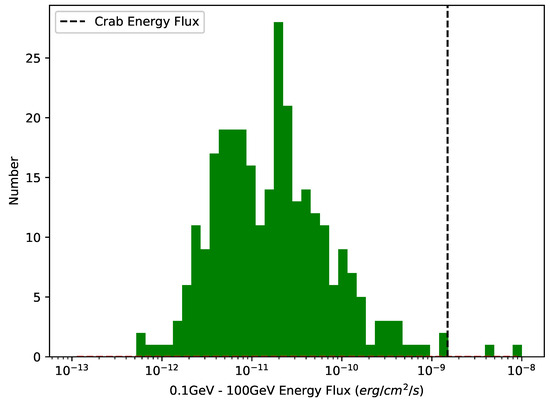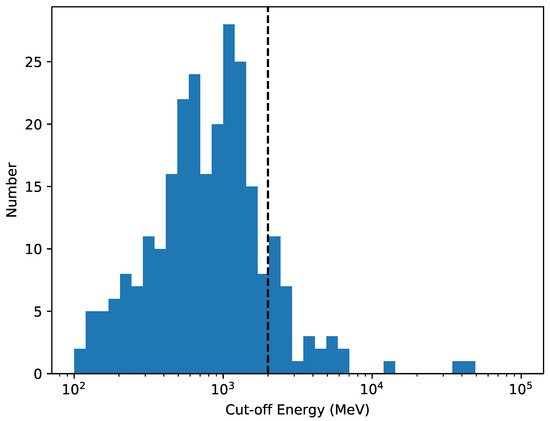Rapidly rotating neutron stars with very strong surface magnetic fields are observed to emit pulsed emission in the whole range of electromagnetic spectrum from radio to high-energy gamma rays. These so-called pulsars are known for their exceptional rotational stability. The radio emission from pulsars is generally believed to be powered by the rotational energy of neutron stars. More than 3000 pulsars have been currently known from radio observations; however, only about 10% are observed in the high-energy gamma ray band. The Fermi-LAT observations in the energy range above 100 MeV have discovered more than 300 pulsars. However, the origin of high-energy non-thermal radiation from pulsars is not completely understood and remains an active area of research. Researchers report a summary of observational features of the gamma ray pulsars and briefly discuss observability for the MACE gamma ray telescope, which has just started its regular science operation at Hanle in India. Six gamma ray pulsars, other than the well-known Crab and Geminga, are identified as probable candidates for MACE observations.
1. Gamma Ray Pulsars
The first gamma ray pulsation at energies above 50 MeV was detected from the Crab pulsar (NP 0532) in 1971 by a detector consisting of a multiplate spark chamber in a balloon-borne experiment
[1]. These gamma ray pulsations were observed at the radio period (
𝑃≈ 33 ms) of the source. The launch of the
Small Astronomy Satellite (SAS-2) in 1972 confirmed the pulsed gamma ray emission from the Crab and Vela pulsars
[2][3]. The
COS-B satellite, launched in 1975, confirmed and significantly improved the measurements of SAS-2 and also discovered a population of twenty unidentified gamma ray sources in the Milky Way Galaxy
[4]. Both SAS-2 and COS-B detected pulsed gamma ray signal at low significance level from the known radio pulsars. The number of radio pulsars increased rapidly after their first discovery, but Crab and Vela remained the only known gamma ray pulsars for more than two decades after their first detection. Subsequently, the
EGRET (Energetic Gamma Ray Experiment Telescope), onboard the Compton Gamma Ray Observatory, was launched in 1991 to search for more gamma ray pulsars apart from exploring the high-energy Universe. It detected a total of six gamma ray pulsars (Crab, B1509-58, Vela, B1706-44, B1951+32, Geminga, and B1055-52) and a few plausible candidates during its operation. Discovery of Geminga as a radio-quiet gamma ray pulsar was an important finding of EGRET, as it turned to be the prototype of young gamma ray pulsars
[5][6][7]. Finally, the Large Area Telescope (LAT), onboard the
Fermi satellite, has been able to discover about 340 gamma ray pulsars at energies above 100 MeV in a time span of approximately 15 years since its launch in 2008
[8]. It has not only confirmed the existence of radio-quiet gamma ray pulsars and MSPs, but has also established pulsars as dominant high-energy gamma ray sources in the Universe.
2. Pulsars with MACE
The gamma ray spectra of most of the pulsars observed by the Fermi-LAT have a cut-off energy in the range 1–10 GeV. Due to this, the gamma ray flux at higher energy end of the spectrum decreases very quickly. Therefore, ground-based telescopes with better sensitivity than the Fermi-LAT in the energy range above 50 GeV play a crucial role in determining the pulsar spectra in the very-high-energy band. With this motivation, researchers have developed a formalism based on the following arguments to select a sample of the Fermi-LAT pulsars for their observation with the MACE telescope.
In general, pulsar light curves or phasograms exhibit a two-peak structure. The first peak position at phase 𝑃1 is attributed to the radio emission and is therefore referred to as the main pulse. This is assigned zero phase, and the position of the second peak at phase 𝑃2 is calculated with respect to 𝑃1. However, there exist pulsars like Geminga, which have only one peak in their phasogram. The pulse amplitude corresponding to these peaks changes with the energy and the 𝑃2 peak is observed to dominate with increasing energy. Therefore, the observation of pulsars in the very-high-energy range by ground-based telescopes like MACE is governed by the detection of pulse at 𝑃2 at 5𝜎 confidence level in their phasogram over the huge isotropic cosmic ray background mainly due to protons. Thus, if a gamma ray pulsar is residing within the nebula, both gamma rays from the nebula and cosmic ray protons will act as the background for pulsar detection with ground-based telescopes. These background events lack in periodicity and, hence, have no phase, whereas photons originating from the pulsars have a well-defined phase associated with their rotation. Thus, the background events are uniformly distributed in the light curve or phasogram of a pulsar, and the gamma ray signal from a pulsar will pile up in a particular phase-bin. If 𝑁𝑏𝑖𝑛𝑠 is the number of bins in the phasogram of a pulsar, then the background will be reduced by a factor of 𝑁𝑏𝑖𝑛𝑠. For 𝑁𝑏𝑖𝑛𝑠= 30, the observation time required for detection of dominant gamma ray peak (𝑇𝑃) in the phasogram of a pulsar at 5𝜎 statistical significance level with the MACE telescope is estimated as

where 𝐼𝑃 is the integral flux of dominating peak above 30 GeV in units of ph cm−2 s−1. Researchers apply this methodology to two well-known gamma ray pulsars Crab and Geminga to estimate the expected time for MACE observations as their gamma ray spectra are available in the energy range covered by the MACE telescope.
2.1. Crab Pulsar
The Crab pulsar (PSR J0534+2200) is the most studied pulsar in all energy bands, from radio to TeV, and is also the first pulsar detected by any ground-based gamma ray telescope. It is a normal pulsar with
𝑃= 33 ms and
𝑃˙=4.2×10−13ss−1. After many attempts, the MAGIC-I telescope detected pulsed emission above 25 GeV from Crab in 2008 and revealed the presence of high cut-off energy in the gamma ray spectrum
[9]. Subsequently, the VERITAS collaboration reported pulsed emission from Crab in the energy range 100–400 GeV
[10]. Long-term observations of the Crab pulsar with the MAGIC telescopes resulted in the first ever detection of very high energy gamma ray emission in the energy range 70 GeV–1.5 TeV
[11]. This finding strongly supported the inverse-Compton origin of the gamma ray photons from the Crab pulsar. It is among the few pulsars that have been detected across the entire electromagnetic spectrum from radio up to gamma rays of beyond 1 TeV
[11]. Its emission profile has three components: two dominant pulses separated by 0.4 in phase, observed from radio to TeV gamma rays, and a third bridge component. The main pulse corresponding to
𝑃1 at phase 0 dominates at radio frequencies. The second pulse corresponding to
𝑃2 at phase 0.4 (also referred to as interpulse) is weaker at radio frequencies and becomes dominant at very-high-energy gamma rays. The bridge component (defined as the pulse phase between the main pulse and the second pulse) is observed in gamma rays up to 150 GeV
[11]. The stereoscopic MAGIC telescope has detected a signal at 6.6
𝜎 and 8.8
𝜎 for
𝑃1 and
𝑃2, respectively, in 152 h of crab pulsar observations at zenith angles below 35
∘∘. The differential energy spectra of gamma ray photons corresponding to
𝑃1 and
𝑃2 are described by a power law in the range 70 GeV to 1.5 TeV. The
𝑃2 spectrum is relatively hard and the corresponding integral flux is two times that of
𝑃1. For
𝐼𝑃=𝐼𝑃2=3.35×10−11ph cm−2s−1, the corresponding detection time for MACE is estimated to be
𝑇𝑃∼61.38 h using Equation (
24).
2.2. Vela
The Vela pulsar (PSR J0835-4510) with
𝑃= 89.3 ms and
𝑃˙=1.2×10−13ss−1 is the second gamma ray pulsar detected, after Crab. It is located in the southern hemisphere at a distance of 280 pc from Earth. The light curve of the Vela pulsar exhibits two peaks,
𝑃1 and
𝑃2, separated by a phase of 0.43. The two peaks are connected by a bridge emission labeled as
𝑃3. The largest IACT, HESS-II, made the first ground-based detection of pulsed gamma ray emission in the energy range of sub-20 GeV to 100 GeV from the Vela pulsar
[12]. The gamma ray signal was detected at the
𝑃2 peak with a statistical significance level of more than 15
𝜎. The power-law model with a very soft spectral index (
Γ𝑠 ∼4.1) very well describes the differential energy spectrum of the
𝑃2 peak in the energy range 10–100 GeV. Being located in the southern hemisphere, the Vela pulsar will be visible to the MACE telescope only at large zenith angles above 75
∘. At these zenith angles, the threshold energy for MACE may increase beyond 150 GeV. Therefore, researchers have not considered this source as potential candidate for MACE observations in the present work.
2.3. Geminga
The Geminga pulsar (PSR J0633+1746) is a radio-quiet gamma ray pulsar with
𝑃= 237 ms and
𝑃˙=1.1×10−14ss−1. Located at a distance of 250 pc from Earth, it is one of the closest gamma ray pulsars. The MAGIC telescope has detected a pulsed gamma ray signal from Geminga at 6.3
𝜎 statistical significance level in 80 h of observations
[13]. Only the
𝑃2 peak is observed to be dominant in the phasogram in the energy range of 15–75 GeV. The corresponding integral flux is estimated as
𝐼𝑃=𝐼𝑃2=2.18×10−11ph cm−2s−1. For this flux level, the total observation time required for MACE observations in the energy range 30 GeV–5 TeV is calculated to be
𝑇𝑃∼144 h.
2.4. Pulsar Catalog for MACE
The current population of gamma ray pulsars detected by the
Fermi-LAT is ∼340. The distribution of integral energy flux in the energy range 0.1–100 GeV for all the
Fermi-LAT pulsars is shown in
Figure 1. It is observed that majority of the pulsars have high-energy flux ∼
1.4×10−11 erg cm−2s−1, which is typically two order less than the corresponding Crab pulsar flux. The
Fermi-LAT spectra of most of the pulsars are described by Equation (
20). The cut-off energy can be approximately calculated as
Figure 1. Histogram of energy flux of the Fermi-LAT pulsars in the energy range 0.1–100 GeV.
The distribution of the cut-off energy (𝐸𝑐) for all the Fermi-LAT pulsars is reported in Figure 2. It is found that most of the pulsars have a cut-off energy close to 0.8 GeV, whereas only 33 pulsars have 𝐸𝑐≥ 2 GeV.
Figure 2. Histogram of the cut-off energy of the Fermi-LAT pulsars. The vertical dotted line indicates 𝐸𝑐=2 GeV.
Applying the visibility criteria of the astrophysical sources from a given observatory, only 96 Fermi-LAT pulsars are found to be visible from the MACE site at Hanle (32.8∘ N, 78.9o E). The next criterion is the identification of pulsars which have 𝐸𝑐≥ 2 GeV. This constraint further reduces the number of pulsars from 96 to 8. Lastly, researchers check for the significance of pulsation in the energy range 10–30 GeV, overlapping with MACE, to be more than 2𝜎. Based on the above criterion, researchers are left with only six pulsar candidates (other than Crab and Geminga) from the 4FGL-DR3 catalog for MACE observations.









